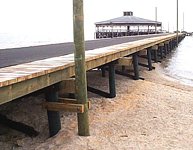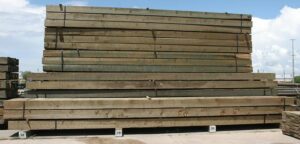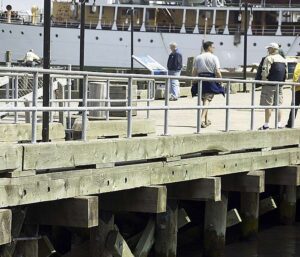Extending the Life of Your Timber Structures: Treatment and Maintenance Best Practices
Introduction
Timber has long been a trusted material for building durable and aesthetically pleasing structures. However, untreated wood is vulnerable to decay, insects, and environmental damage. To ensure longevity, it is crucial to apply proper wood treatment and maintenance techniques. In this guide, we explore the best practices for treating and preserving timber, highlighting how treated lumber can significantly extend the lifespan of your structures.

Why Timber Treatment Matters
Protection Against Decay and Rot
Moisture is the primary enemy of timber, leading to fungal growth and structural deterioration. Treated timber undergoes chemical or pressure treatments that protect against rot, ensuring the wood remains intact even in harsh conditions.
Resistance to Insects and Pests
Termites, carpenter ants, and wood-boring beetles can cause extensive damage to untreated wood. Wood treatment methods infuse timber with preservatives that repel pests, offering long-term protection.
Enhanced Durability and Strength
Treated lumber is designed to withstand environmental stressors such as humidity, UV exposure, and fluctuating temperatures, making it ideal for outdoor and marine applications.
Common Timber Treatment Methods
Pressure Treatment
One of the most effective methods, pressure treatment forces preservatives deep into the wood fibers, creating a strong barrier against moisture, insects, and fungi. This is commonly used for decking, pilings, and fencing.
Chemical Preservatives
Different chemical treatments, including borate and copper-based solutions, provide varying levels of protection. Borate is effective for interior applications, while copper-based treatments excel in outdoor environments.
Creosote Treatment
Creosote is a powerful preservative commonly used for industrial timber applications. It offers superior water resistance but may not be suitable for residential projects due to its strong odor and toxicity.
Heat Treatment
Heat treatment involves exposing timber to high temperatures to reduce its moisture content and kill fungi or insects. While it does not add chemicals, it enhances wood stability and resistance to pests.

Best Practices for Installing Treated Timber
Choose the Right Type of Treated Lumber
Consider the specific environmental conditions of your project. For marine and high-moisture areas, opt for water-resistant treatments like gun barrel piling or heavy-duty preservatives.
Proper Sealing and Coating
Even treated wood benefits from additional sealing. Apply a high-quality wood sealant or paint to prevent surface damage and extend the life of the timber.
Use Stainless Steel or Galvanized Fasteners
Treated timber contains preservatives that can corrode standard metal fasteners. Opt for stainless steel or galvanized nails, screws, and bolts to ensure structural integrity.
Allow Proper Drying Before Installation
Freshly treated timber may still retain moisture from the treatment process. Let it dry properly before use to prevent warping or shrinking after installation.

Maintenance Tips for Long-Lasting Timber Structures
Regular Inspections
Check for signs of rot, insect infestations, and moisture damage. Early detection allows for timely repairs and prevents extensive deterioration.
Keep Wood Dry
Although treated timber resists moisture, keeping structures dry further extends their lifespan. Ensure proper drainage and ventilation in areas prone to water exposure.
Apply Maintenance Treatments
Reapply protective coatings, stains, or sealants every few years to maintain wood resilience against environmental factors.
Avoid Direct Ground Contact
If possible, prevent wood from coming into direct contact with soil, which accelerates decay. Use concrete bases or protective barriers where necessary.
Address Mold and Mildew Promptly
Mold can develop on treated timber if exposed to prolonged moisture. Clean affected areas with a mild bleach solution and ensure proper ventilation to prevent regrowth.

Conclusion
Investing in high-quality treated timber and following best maintenance practices will save you time and money in the long run. Whether you’re constructing a dock, fence, or foundation piling, ensuring proper treatment and care will maximize durability and performance.
📞 Call us at (800) 816-0335 or visit 🔗 https://buildingproductsplus.com/ to learn more about our premium treated lumber products!
